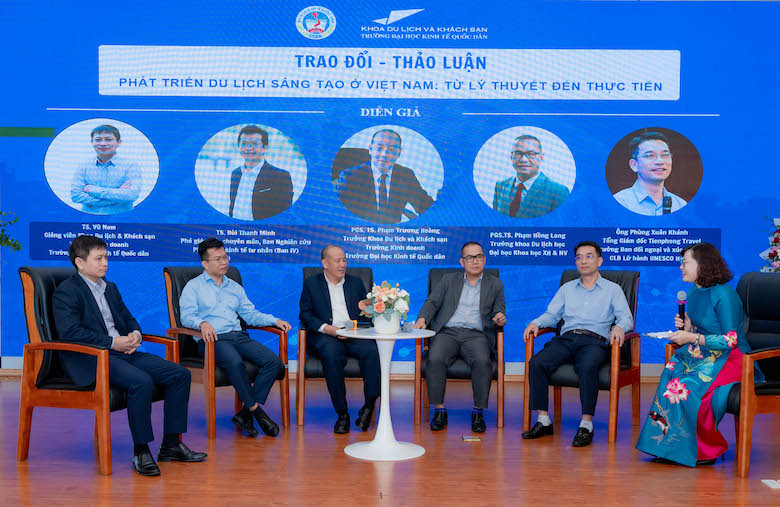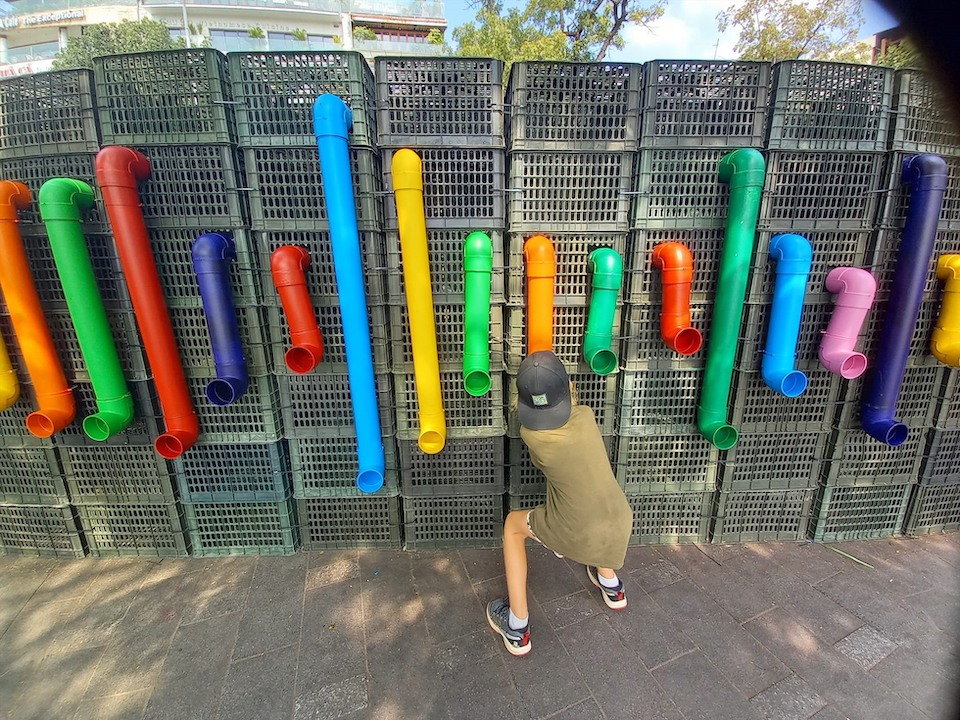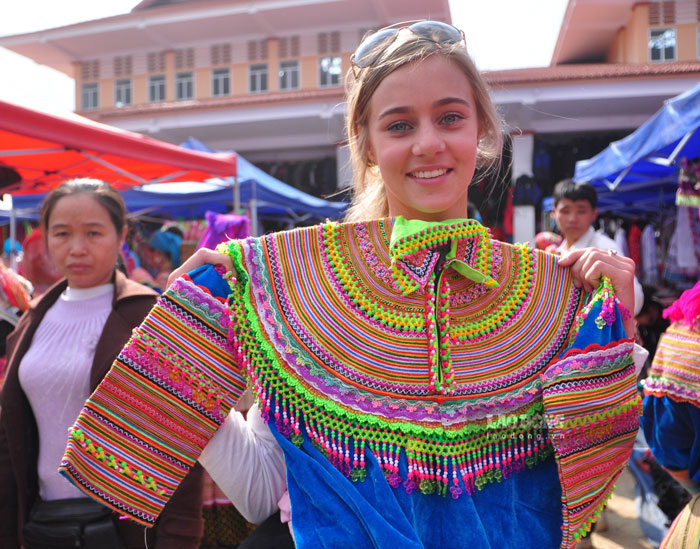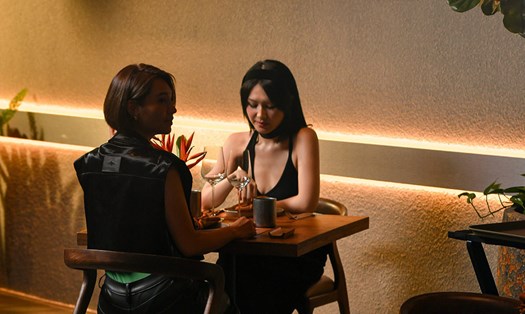Creative tourism is a segment that has been growing very rapidly in the world. In many countries and destinations, creative tourism is considered a necessary solution for the development of the tourism industry.
Vietnam has a rich and diverse cultural background, ideal for exploiting and developing creative tourism. However, there are still many issues of creative tourism in Vietnam that need to be clarified, especially in the context of strong changes in technology and tourism consumer behavior. This issue was discussed at the national scientific conference “Developing creative tourism in Vietnam: From theory to practice” held at the National Economics University.

Potential for creative tourism development
Associate Professor, Dr. Ta Van Loi, Principal of the School of Business, National Economics University, said that Vietnam has a very diverse and rich system of resources, both natural and cultural. In particular, for cultural and creative tourism, Vietnam has a very unique and special system of cultural resources due to the cultural convergence of 54 ethnic groups and a long history.
According to statistics from the Department of Cultural Heritage, Vietnam currently has more than 40,000 tangible cultural heritages, including 6 tangible cultural heritages recognized by UNESCO as world heritages, 107 special national relics, more than 3,500 national relics, more than 10,000 provincial relics and nearly 3 million documents and artifacts; of which 237 artifacts and groups of artifacts are ranked as national treasures. The cultural heritage system is distributed in many localities and has become an extremely valuable resource for localities to develop and diversify tourism products and services.
According to the “Creative Economy Report” (2008), the United Nations Conference on Trade and Development (UNCTAD), for countries with rich cultural resources, similar to the case of Vietnam, the creative economy can serve as a foundation for sustainable development, especially when combined with tourism. This tourism model not only boosts the economy of less developed regions, but also preserves cultural heritage by making it a living and growing part of the economy.

This can be demonstrated in countries with strong tourism development in the region. Associate Professor Dr. Pham Hong Long, Head of the Department of Tourism Studies, University of Social Sciences and Humanities (Vietnam National University, Hanoi), believes that this type of tourism can enhance the competitiveness of tourist destinations.
“We need to look at reality and learn from developed countries such as Thailand, Malaysia and Singapore. Malaysia is also a typical example of creativity in tourism. Kuching City, known for its cat symbol, has taken advantage of this image to create unique tourism products. Thailand also has many creative strategies such as “5F” (Food, Fashion, Film, Fight, Festival) to attract tourists,” said Mr. Pham Hong Long.
According to this expert, developing creative tourism is not only about creating new products but also requires sustainability to attract tourists and their wallets.
“The nature of sustainable tourism development includes innovation. Because “development” cannot mean standing still. These two factors will complement each other. If we only keep old tourism products, we will not be able to attract tourists for a long time. Because people are always interested in new things,” Associate Professor, Dr. Pham Hong Long analyzed.
The problem for Vietnam
To promote the development of creative tourism in Vietnam, the role of state management and policies is an issue that needs to be focused on. Dr. Bui Thanh Minh, Deputy Director of the Office of Private Economic Development Research Board (Board IV), said that the development of creative tourism requires strong intervention and support from the state.
First of all, the government needs to have a clear program and philosophy to develop creative tourism. “Only when there is an overall strategy can we connect,” Mr. Bui Thanh Minh affirmed.
Second, the state needs to invest in research and development of innovative tourism products. Businesses can only commercialize these products when they are profitable. Therefore, the state needs to provide seed capital or available appropriate models to support businesses.
Third, the state needs to design public-private partnership mechanisms to promote innovation. These partnership models need to include sharing of resources and experience among stakeholders.
Finally, the state needs to ensure that natural and cultural resources are protected and developed sustainably. This requires investment and close management from the state to ensure that these resources are not overexploited and are always available for creative tourism development.

Meanwhile, Associate Professor Dr. Pham Truong Hoang, Head of the Faculty of Tourism and Hospitality (National Economics University, Hanoi) emphasized the human factor in the process of creating tourism products.
“Creativity needs to be based on the fundamental characteristics of tourism. Without understanding these characteristics, creativity cannot attract tourists. People working in tourism must still understand the tourism industry, but at the same time must also nurture within themselves a strong creative energy. They need to have an entrepreneurial spirit, go above and beyond, always see new trends in development, and take advantage of opportunities from all sides.”
He added about the issue of human resource training: “Universities need to have a specific strategy to improve the quality of training. Teaching creativity is a big challenge, but very necessary. We need to create an environment that stimulates creativity, where students can develop new ideas and apply them in practice.”
Besides, although Vietnam is well-positioned to develop creative tourism, there are still some challenges that need to be addressed, according to MSc. Le Anh Thu, UNESCO Office in Vietnam.
The expert said that Vietnam’s tourism industry is still largely focused on mass tourism, with a greater emphasis on annual tourist arrivals. Shifting this focus will require significant investment in capacity building and marketing strategies that highlight Vietnam’s cultural and creative assets. Infrastructure in rural areas, where many of the most important cultural experiences are located, remains underdeveloped.





